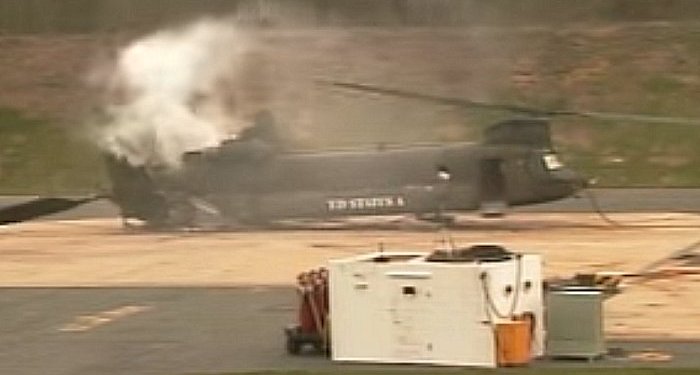
Before we can understand Ground resonance, we must first understand dissymetry of lift and how it is compensated for in a fully-articulated system. This will lead to a discussion about blade flapping, and why the blades must lead/lag (aka hunting).
Ground resonance happens in helicopters with lead-lag hinges. It occurs only on the ground. It starts when the blades "bunch up" on one side of the rotor disc where they generate an unbalanced centrifical force that gets in phase with the natural frequency of the aircraft rocking on it's landing gear. Modern helicopters avoid this by using dampers on the blades and on the gear (shock absorbed struts). It is less prominent on wheeled helicopters although can occur. The emergency action is to lift the aircraft to a hover.
Ground resonance has not been "solved", and is still a big concern for anyone who flies a helicopter with a fully-articulated rotor system. It basically is an out-of-balance condition in the rotor system of a helicopter on the ground that rapidly increases in frequency until the helicopter shakes itself apart. It is usually caused by a hard ground contact, and is much more likely in aircraft with improperly maintained landing gear (deflated oleo struts, for example).
It cannot occur in a two bladed semi-rigid see-saw type rotor system, because the blades do not lead and lag.
Ground resonance happens in helicopters with lead-lag hinges. It occurs only on the ground. It starts when the blades "bunch up" on one side of the rotor disc where they generate an unbalanced centrifical force that gets in phase with the natural frequency of the aircraft rocking on it's landing gear. Modern helicopters avoid this by using dampers on the blades and on the gear (shock absorbed struts). It is less prominent on wheeled helicopters although can occur. The emergency action is to lift the aircraft to a hover.
Ground resonance has not been "solved", and is still a big concern for anyone who flies a helicopter with a fully-articulated rotor system. It basically is an out-of-balance condition in the rotor system of a helicopter on the ground that rapidly increases in frequency until the helicopter shakes itself apart. It is usually caused by a hard ground contact, and is much more likely in aircraft with improperly maintained landing gear (deflated oleo struts, for example).
It cannot occur in a two bladed semi-rigid see-saw type rotor system, because the blades do not lead and lag.
